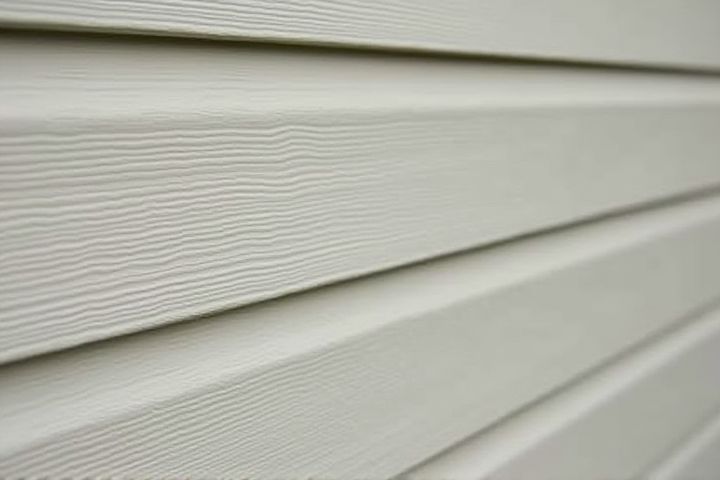
When selecting house siding, consider factors such as material durability, maintenance requirements, and aesthetic appeal. Popular options include vinyl, which is low-maintenance and available in numerous colors, and fiber cement, known for its durability and resistance to pests. Wood siding offers a classic look but may require more upkeep to prevent rot and insects. Insulation properties are crucial for energy efficiency, so look for options with high R-values. Finally, local climate conditions can influence your choice; for instance, regions prone to high humidity may benefit from weather-resistant materials.
How To Choose House Siding
Material durability
When selecting house siding, prioritize materials known for their durability, such as fiber cement, vinyl, or metal. Fiber cement can last over 50 years and is resistant to fire, rot, and pests, making it a top choice for long-lasting protection. Vinyl siding, with a lifespan of 20 to 40 years, offers low maintenance and resistance to moisture and insects, while metal siding, particularly aluminum, provides excellent durability against the elements. Evaluate your local climate and potential environmental stressors to make an informed decision that ensures your siding withstands various conditions over time.
Climate considerations
Choosing house siding requires careful consideration of your local climate to ensure durability and effectiveness. In humid climates, materials like fiber cement or vinyl resist moisture and mold growth, while in areas with extreme temperatures, insulated siding can enhance energy efficiency. If you live in a region prone to wildfires, selecting non-combustible options such as stucco or brick can significantly mitigate risks. Always consider local weather patterns and potential environmental impacts to make an informed decision that safeguards your home's longevity.
Maintenance requirements
Choosing house siding requires careful consideration of maintenance requirements to ensure long-lasting durability and aesthetic appeal. Vinyl siding, for instance, demands minimal upkeep, needing only occasional cleaning with soap and water to maintain its appearance. In contrast, wood siding may require more frequent maintenance such as painting or staining every 3 to 5 years to protect against moisture and pests. Fiber cement siding offers a middle ground, typically requiring repainting every 10 to 15 years, making it a balance of durability and lower maintenance needs.
Energy efficiency
When selecting house siding, prioritize materials with high energy efficiency ratings, such as insulated vinyl or fiber cement siding, which can reduce your heating and cooling costs by up to 20%. Look for siding products that have an R-value indication, with higher values offering better thermal resistance. Consider the presence of reflective coatings, which can improve your home's energy efficiency by minimizing heat absorption. Lastly, ensure proper installation, as gaps or poor sealing can diminish the energy-saving benefits of your new siding.
Aesthetic appeal
When choosing house siding for aesthetic appeal, consider materials such as wood, vinyl, or fiber cement, each offering unique textures and colors to enhance your home's architecture. You may opt for classic horizontal or vertical panels, board-and-batten styles, or even shingle designs, with numerous color options available to suit your personal taste. Pay attention to how the siding complements not only your home's style but also your neighborhood's character, contributing to overall curb appeal. Investing in high-quality siding can improve your home's value by as much as 70% upon resale, so select wisely to blend beauty with durability.
Color options
When selecting house siding, color options play a crucial role in enhancing your home's curb appeal and value. Consider popular hues like classic white, which typically sells 15% more than other colors, or muted earth tones that can blend seamlessly with natural surroundings. You may also explore trendier shades such as deep blue or rich green, which can add a modern touch while reflecting your personal style. Always request samples and evaluate them in different lighting conditions to ensure your choice complements the architectural features of your home.
Cost and budget
When choosing house siding, it's crucial to consider your budget, as siding costs can range from $1.50 to $12 per square foot, depending on the material. Vinyl siding, typically the most economical option, costs around $2 to $7 per square foot, while wood or fiber cement can run $4 to $10 per square foot. Factor in installation expenses, which may add another $1 to $3 per square foot, influencing your overall financial commitment. Understanding the lifespan of different materials, with vinyl lasting 20-40 years and fiber cement up to 50 years, helps you evaluate long-term value against initial costs.
Installation process
Selecting the right house siding involves evaluating several key factors related to the installation process. Consider the weight of the siding material; for instance, vinyl siding is lighter and easier to install compared to fiber cement, which may require specialized tools and a professional installer. Ensure you account for installation time, as certain siding types, like wood, may take longer due to detailed finishing work. Finally, investigate local weather conditions and building codes, as some materials, such as insulated vinyl, can enhance energy efficiency and compliance with regulations.
Environmental impact
When selecting house siding, consider environmentally sustainable materials like fiber cement, wood, or recycled products that minimize ecological footprints. Assess the sourcing of materials; locally sourced options can significantly reduce transportation emissions and support your community's economy. Look for siding that is energy-efficient, providing insulation benefits that enhance your home's energy performance and reduce heating and cooling costs. Finally, check for certifications such as Energy Star or GreenGuard, which indicate the material's suitability for environmentally conscious building practices.
Warranty and lifespan
When selecting house siding, consider options that offer extensive warranties, typically ranging from 20 to 50 years. Vinyl siding often comes with a lifetime warranty, while fiber cement may include a 30-year guarantee, reflecting durability and resistance to weather elements. Evaluate expected lifespan, with well-maintained siding lasting up to 50 years or more, ensuring long-term value for your home. Selecting materials with high performance ratings also indicates how well they will withstand the test of time and environmental challenges.
